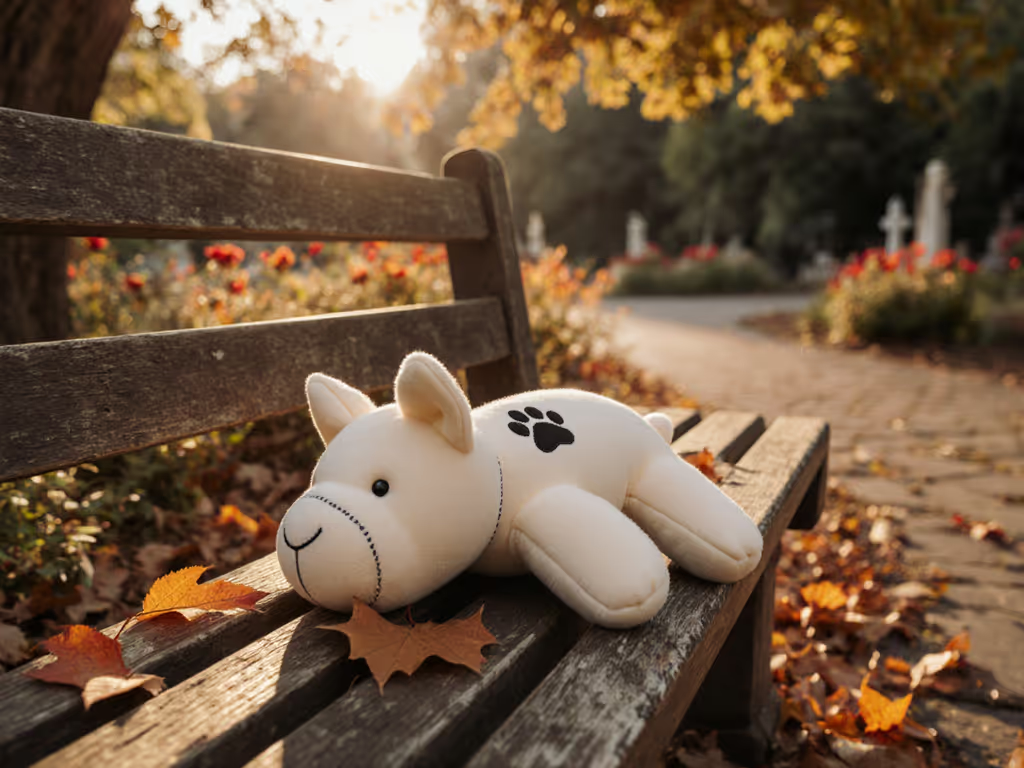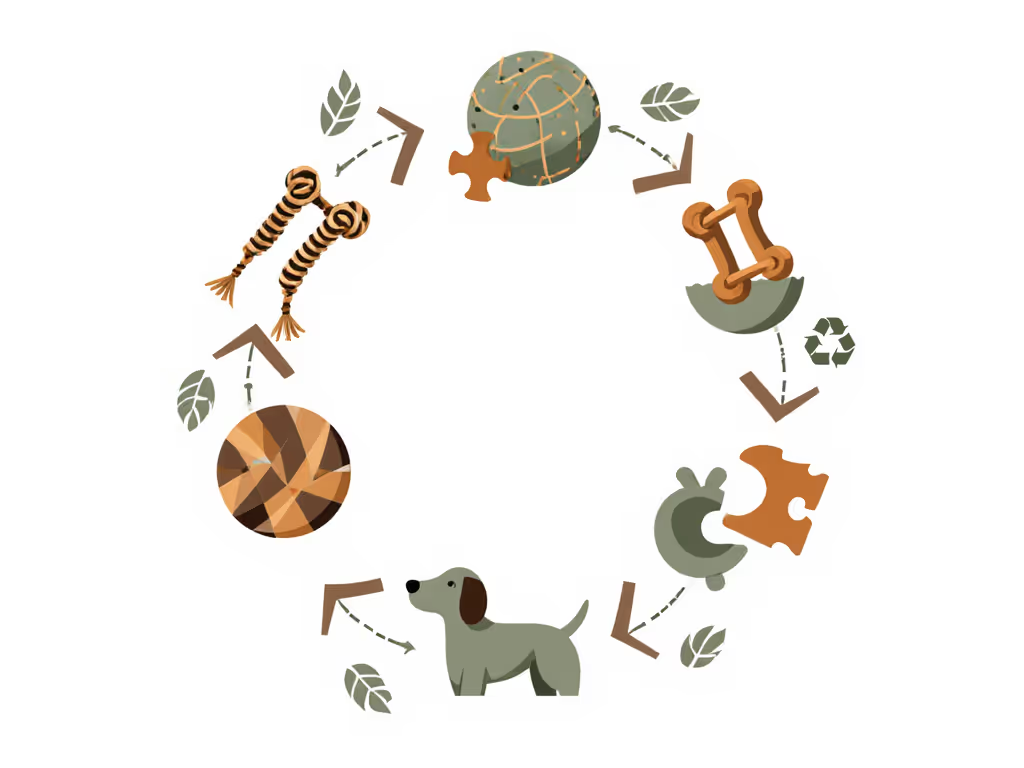
Dog Toy Carbon Footprint: Decoding the Full Lifecycle Impact

When you toss your pup a new chew toy, you are not just buying playtime, you are participating in a complex environmental story. Understanding the dog toy environmental impact from raw materials to disposal is essential for today's conscious pet guardians. The sustainable pet product lifecycle reveals surprising truths about what happens before and after your dog's favorite toy enters your home. Let's unpack this process with frameworks that help you make choices aligning with your values without compromising your dog's needs.
1. What's Really in Your Dog's Chew Toy?
Most guardians do not realize that 6% of landfill plastics worldwide come from discarded toys, yes, including dog toys. Unlike children's toys, which have been studied extensively, pet toy environmental metrics lag behind in transparency. Recent comparative life cycle assessments (LCAs) show plastic toys carry significantly higher carbon footprints than alternatives. For a deeper look at how different materials stack up on durability, safety, and carbon impact, see our sustainable dog toy materials face-off.
Synthetic materials like polybutylene and PVC generate the highest global warming potential in kg CO₂ equivalents per kilogram (a metric now essential for eco-conscious dog ownership).
When I help new adopters navigate toy selection, I emphasize a simple fit check: weigh the environmental impact against your dog's actual needs. Not every pup requires ultra-durable plastic, their size, jaw strength, and playstyle determine what is genuinely necessary versus what is marketing hype.
2. The "Chew-Through" Problem: Short Lifespan, Long Impact
Power chewers create an environmental paradox: toys that survive longer seem more sustainable, but their dense plastics often have higher manufacturing footprints. Meanwhile, cheaper toys that shatter in minutes create waste without providing value. A study of similar toys revealed that plastic versions generated 7% more greenhouse gas emissions and 25% more acidification potential than non-plastic alternatives.
This is where your Playstyle Index becomes critical. Matching toys to your dog's actual engagement style prevents wasted resources. A nervous, nibbling terrier does not need a bone built for a bulldog's jaw strength, those mismatched purchases create unnecessary environmental strain. Focus on a must-have vs nice-to-have assessment specific to your dog's behavior. To reduce purchases without losing engagement, use our toy rotation guide.
3. Beyond the Checkout: Transportation's Hidden Toll
Manufacturing accounts for only part of the equation. The distance toys travel before reaching your home significantly impacts their carbon footprint. Toys shipped across oceans generate substantially more emissions than locally made alternatives. Reduction in transportation miles alone can lower greenhouse gas emissions by 7% and acidification potential by 25%, key metrics for evaluating true pet product sustainability.
When considering your next purchase, apply a simple decision tree: Is this toy made within 500 miles of your location? Was it shipped by ground rather than air? Could it last through multiple dogs via donation? These questions form the foundation of responsible eco-conscious dog ownership.
4. The Disposal Dilemma: Landfills Don't Discriminate
In France alone, 40 million toys end up in landfills annually, a statistic that includes dog toys. Unlike human toys, pet toys often contain embedded materials (squeakers, stuffing, coatings) that prevent recycling. Traditional plastics persist for centuries, while even "eco-friendly" alternatives face sorting challenges at recycling facilities. Learn how to handle worn-out toys responsibly with our dog toy recycling guide.

West Paw Zogoflex Hurley Dog Bone
This is where one-page clarity transforms intention into action. Create a simple chart pairing your dog's size band with appropriate toy longevity expectations. For example, a 10-pound dog with moderate chewing typically needs toys lasting 2-3 months, not 2-3 weeks. This prevents premature disposal and reduces your household's contribution to the 6% of plastic landfill coming from toys.
5. Durability Isn't Just About Safety: It's Sustainability
Contrary to marketing claims, "indestructible" toys often represent the worst environmental choice if they do not align with your dog's actual chewing capability. True sustainability considers both safety and longevity. When a toy withstands your dog's specific jaw strength for its expected lifespan, it maximizes resource efficiency.
Consider this: Five cheap toys that fail quickly create more environmental impact than one durable toy that lasts five times longer. Use standardized chew-resistance metrics rather than vague marketing terms. West Paw's Zogoflex material, for instance, offers measurable durability metrics that translate to longer usable life, and less frequent replacement.
6. The Circular Economy Opportunity
The emerging concept of a dog toy circular economy offers hope. Forward-thinking brands now implement take-back programs where worn toys get recycled into new products rather than landfills. Some innovative companies use ocean-bound plastics, creating immediate environmental benefit while reducing virgin material demand.
For guardians, this means seeking brands with verified sustainability programs beyond just "eco-friendly" packaging claims. Look for transparency in:
- Material sourcing locations
- Production energy sources
- End-of-life recycling options
- Third-party sustainability certifications To verify claims and avoid greenwashing, see our guide to dog toy safety certifications.
7. Your Practical Sustainability Framework
Forget overwhelming catalogs of "green" options. Apply these three filters to simplify eco-conscious toy selection:
- Size Appropriateness Check: Does the toy match your dog's actual chewing power? (Too small = safety risk; too large = waste of resources)
- Lifecycle Visibility: Can you verify material origins and manufacturing processes?
- End-of-Life Plan: Does this toy have a responsible disposal pathway beyond your trash can?
Remember my first home visit where a simple playstyle mapping transformed chaos into calm? That same clarity applies to environmental choices. When I paused with that anxious pup, we did not need more options, we needed the right match. The same principle applies to sustainable toy selection: constraints create confidence.

The Sustainable Choice is the Confident Choice
Eco-conscious dog ownership is not about perfection, it is about progress through practical decision frameworks. When you align toy selection with your dog's actual needs rather than marketing hype, you reduce waste while providing better enrichment. True sustainability metrics consider the entire journey from raw material to disposal, not just the "eco" label on the package.
Your most powerful tool remains the simplest: observation. Watch how your dog engages with toys. Note what truly lasts versus what gets destroyed immediately. Adjust your purchases accordingly. This mindful approach creates less environmental impact while delivering better behavioral outcomes, a win for your pup and the planet.
Further Exploration: Ready to deepen your understanding? Research brands with verified take-back programs, investigate local toy swapping groups for multi-dog households, and explore DIY enrichment options using household items that avoid manufacturing impacts entirely. Your journey toward sustainable pet guardianship starts with one clear choice at a time.



